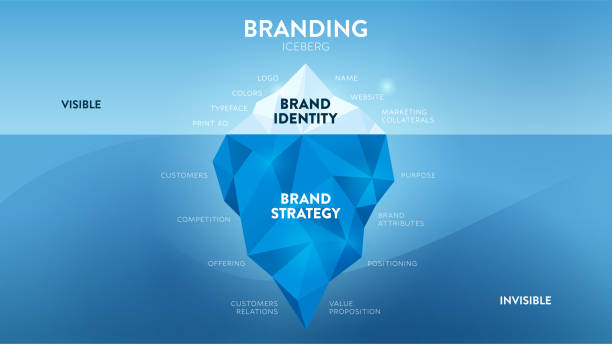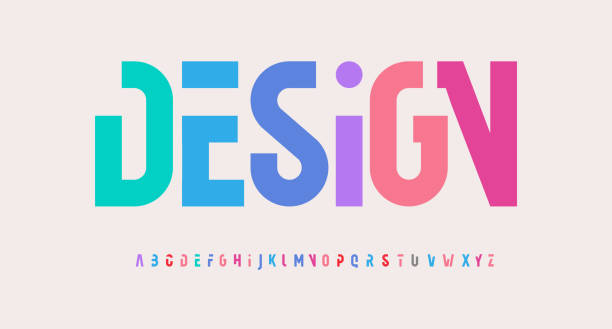Have you ever wondered what truly sets successful brands apart? Why do some businesses instantly connect with their audience while others struggle to make an impact? Also, the answer often lies in the power of brand development—a roadmap that defines who you are, what you stand for, and how you’ll reach the people who matter most to your business. Whether you’re just starting out or looking to refresh your brand, creating a unique brand development roadmap can be the key to making your business memorable and relatable.
Why a Brand Development Roadmap Matters
Building a strong brand is more than just designing a logo or picking colors. Additionally, a well-crafted brand encompasses the values, personality, and vision of your business. Also, it’s the promise you make to your customers and the experience you deliver to them. Moreover, with a clear, strategic roadmap, you can shape a brand identity that resonates with your target audience, strengthens customer loyalty, and helps you stand out in a competitive market.
In this guide, we’ll walk you through the essential steps to create your own brand development roadmap. Furthermore, from defining your core values to building a consistent voice and visuals, every piece of the puzzle works together to bring your brand to life in a way that’s uniquely yours. So, let’s dive into the steps that will guide you toward a distinctive and impactful brand.
Step 1: Define Your Brand’s Core Values and Mission
The first step in any brand development journey is to define your core values and mission. Additionally, these foundational elements give direction to everything you do as a brand and help ensure that your actions align with your purpose.
- Core Values: Think of your core values as the principles that guide your brand. Are you committed to sustainability, transparency, or innovation? Identifying these values not only clarifies your purpose but also helps attract customers who share your beliefs.
- Mission Statement: Your mission statement should capture why your brand exists and what it aims to accomplish. Also, a strong mission statement speaks directly to your target audience, explaining how you intend to impact their lives in a meaningful way.
Take time to brainstorm and articulate these aspects carefully. Moreover, they serve as your brand’s compass, helping to keep your messaging and decisions aligned with your vision.
Step 2: Understand Your Target Audience – Brand Development Roadmap
Knowing who you’re speaking to is crucial for any brand. Additionally, understanding your target audience allows you to create a brand experience tailored to their preferences, needs, and pain points. So, conduct market research to gather insights into the demographics, psychographics, and behaviors of your ideal customers.
- Create Buyer Personas: Develop detailed personas that represent your target audience segments. Consider factors such as age, location, interests, values, and shopping behaviors. So, this information will help you craft messages that resonate with them.
- Customer Pain Points and Motivations: What problems are your customers facing that your brand can solve? Additionally, identify their key challenges and consider how your brand can provide value in ways that address these issues directly.
When your brand connects with customers on a personal level, they are more likely to feel loyal and invested in your success.
Step 3: Develop a Unique Brand Positioning
Brand positioning defines how your brand stands out in the market and how you differentiate yourself from competitors. Moreover, think about what makes your brand unique—your “secret sauce.”
- Identify Competitors: Analyze competitors in your industry. Also, understand their strengths, weaknesses, and brand positioning strategies. So, use this analysis to find gaps in the market where your brand can fill a unique role.
- Define Your Unique Value Proposition (UVP): Your UVP is a clear, concise statement that communicates the unique value your brand offers. Also, it should emphasize what sets you apart and why customers should choose you over others.
Effective positioning doesn’t just communicate what you do; it explains why your approach is different and better.

Step 4: Craft a Memorable Brand Voice and Personality – Brand Development Roadmap
How do you want customers to perceive and remember your brand? Also, your brand voice and personality play a key role in creating that perception.
- Determine Your Brand’s Personality: Is your brand friendly and approachable, or sophisticated and professional? So, choose traits that reflect your brand’s values and appeal to your audience.
- Establish a Consistent Brand Voice: Your brand voice should be consistent across all channels, from social media to customer support emails. Whether your tone is casual or formal, make sure it aligns with your personality and connects with your audience.
A well-defined brand voice ensures that customers feel familiar with your brand, no matter where they interact with you.
Step 5: Design a Visual Identity That Resonates
Your visual identity is one of the most recognizable aspects of your brand. Additionally, it includes your logo, colors, fonts, and other design elements that together create a cohesive, appealing look.
- Logo Design: A good logo is memorable, versatile, and reflective of your brand’s personality. Additionally, consider hiring a professional designer if budget allows to create a logo that visually represents your brand’s essence.
- Color Palette: Colors evoke emotions and influence perception. Choose a color palette that aligns with the emotions you want to inspire in your audience. For example, blue often conveys trust, while green is associated with growth and sustainability.
- Typography: Fonts play a subtle but essential role in establishing a brand’s tone. Choose fonts that complement your brand’s personality and are easy to read across different mediums.
Consistency is crucial—use your visual identity guidelines across all brand assets to reinforce a strong, unified presence.
Step 6: Create Compelling Brand Messaging – Brand Development Roadmap
Your brand messaging is how you communicate your brand’s story, values, and promises to your audience. Clear, compelling messaging tells customers what your brand stands for and why they should care.
- Develop Key Messaging Points: Identify key messages that communicate your brand’s value and appeal to your audience’s needs and desires. These points should be concise and easy to understand.
- Craft a Tagline: A tagline is a short, memorable phrase that encapsulates your brand’s essence. Think of Nike’s “Just Do It” or Apple’s “Think Different.” A great tagline is inspiring, relevant, and easy to recall.
By focusing on impactful messaging, you can create a brand narrative that resonates with your audience and strengthens emotional connections.

Step 7: Build Your Brand’s Online Presence
In today’s digital age, a strong online presence is essential for reaching and engaging with your audience. This includes not only social media but also your website, email marketing, and any other digital platforms.
- Develop a Professional Website: Your website is often the first impression customers have of your brand. Invest in a clean, user-friendly design that reflects your brand’s identity.
- Leverage Social Media: Identify which social media platforms your audience frequents and focus on those. Share content that reflects your brand’s voice, values, and expertise.
- Engage with Your Audience: Engage regularly through comments, messages, and interactive content. Engagement fosters loyalty and gives your brand a more personable, approachable image.
A cohesive online presence not only builds brand awareness but also reinforces your identity across platforms.
Step 8: Consistency is Key—Establish Brand Guidelines – Brand Development Roadmap
Consistency builds trust. When customers recognize your brand’s look, feel, and message across various touchpoints, they’re more likely to feel comfortable and loyal to your brand.
- Create Brand Guidelines: Brand guidelines are essential for maintaining consistency across all channels and materials. These guidelines should cover your logo, colors, typography, brand voice, and tone.
- Ensure Alignment Among Team Members: Make sure your team understands and follows the brand guidelines. Whether it’s customer service, social media, or sales, every aspect of your brand should reflect the same cohesive image.
Consistency creates a reliable, trustworthy brand image that customers can count on.
Step 9: Adapt and Evolve Your Brand Over Time
As your business grows, so should your brand. Regularly revisit and adjust your brand development roadmap to keep it relevant and aligned with evolving customer preferences and market trends.
- Gather Customer Feedback: Pay attention to what your customers are saying. Their feedback can provide valuable insights into how your brand is perceived and highlight areas for improvement.
- Stay Updated on Industry Trends: Adapting to new trends and shifts in your industry can help keep your brand fresh and appealing to your audience.
- Embrace Change When Needed: Sometimes, a rebrand or refresh is necessary. If you notice a decline in engagement or feel your brand no longer reflects your business, don’t be afraid to make adjustments.
An adaptable brand shows that you’re committed to growth and dedicated to meeting your customers’ needs.

Conclusion: Brand Development Roadmap
Crafting a unique brand development roadmap is a powerful journey that allows you to bring your brand to life in a way that’s memorable, authentic, and impactful. From defining your values to building a consistent voice and engaging online presence, every step you take shapes how people experience your brand. With a clear vision and a well-thought-out plan, you can create a brand that not only stands out but also deeply resonates with your audience.
Remember, a great brand is built over time. Stay true to your values, keep your customers at the heart of your strategy, and be open to growth along the way. Your unique brand journey is just beginning, and with each step, you’ll be closer to building a brand that leaves a lasting impression.








